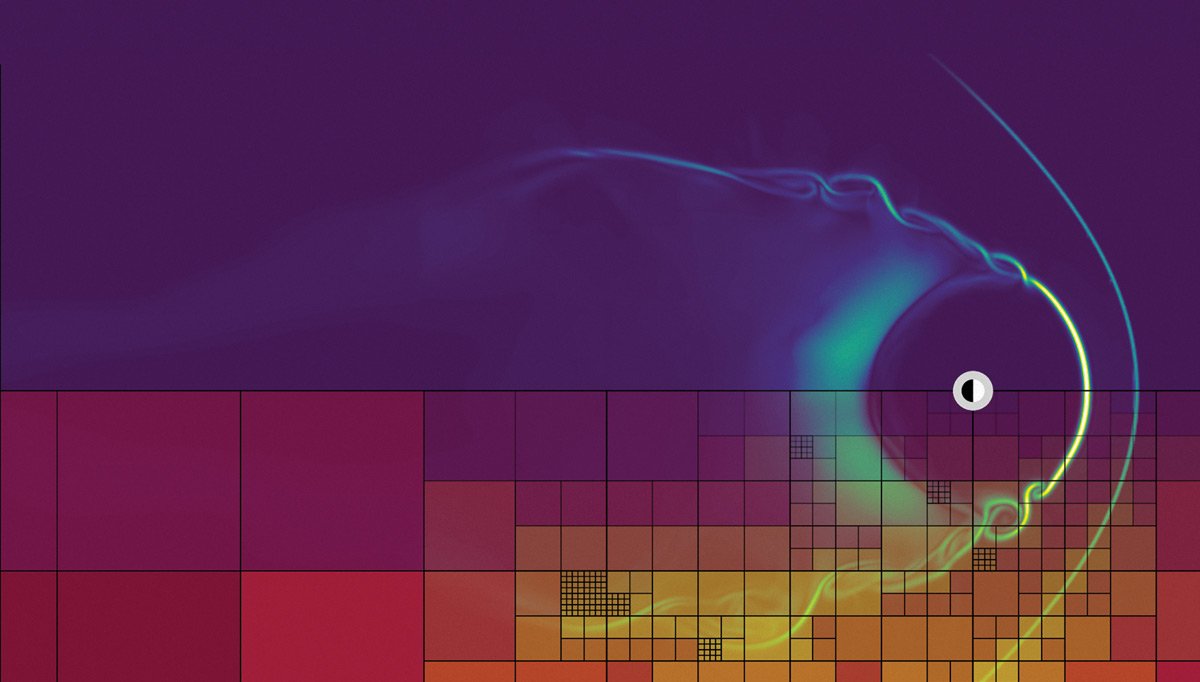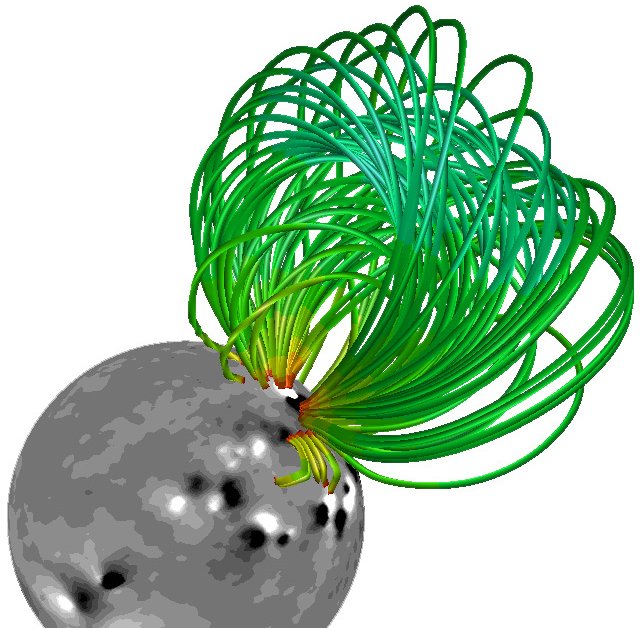Powering Discoveries
Aaron Dubrow
Related Articles
Protecting Earth from Space Storms
Frontera helps improve space weather forecasting to avoid worst effects of extreme events

"There are only two natural disasters that could impact the entire U.S.," according to Gabor Toth, professor of Climate and Space Sciences and Engineering at the University of Michigan. "One is a pandemic and the other is an extreme space weather event."
The last major space weather event struck the Earth in 1859. Smaller, but still significant, space weather events occur regularly. These fry electronics and power grids, disrupt global positioning systems, cause shifts in the range of the Aurora Borealis, and raise the risk of radiation to astronauts or passengers on planes crossing over the poles.

"We have all these technological assets that are at risk," Toth said. "If an extreme event like the one in 1859 happened again, it would completely destroy the power grid and satellite and communications systems — the stakes are much higher."
Motivated by the White House National Space Weather Strategy and Action Plan and the National Strategic Computing Initiative, in 2020, NSF and NASA created the Space Weather with Quantified Uncertainties (SWQU) program. It brings together research teams from across scientific disciplines to advance the field of space weather modeling.
Toth helped develop today's preeminent space weather prediction model, which is used for operational forecasting by the National Oceanic and Atmospheric Administration (NOAA). On February 3, 2021, NOAA began using the Geospace Model Version 2.0 to predict geomagnetic disturbances.
The Geospace Model is based on a global representation of Earth's geospace environment that includes magnetohydrodynamics — the properties and behavior of electrically conducting fluids like plasma interacting with magnetic fields, which plays a key role in the dynamics of space weather.
The model predicts magnetic disturbances on the ground resulting from geospace interactions with solar wind — disturbances that induce a geoelectric field that can damage large-scale electrical conductors, such as the power grid.
Short-term advanced warning from the model provides power grid operators with situational awareness about harmful currents and allows time to mitigate the problem and maintain the integrity of the electric power grid.
"There are only two natural disasters that could impact the entire U.S. One is a pandemic and the other is an extreme space weather event."
But as advanced as the Geospace Model is, it provides only about 30 minutes of advanced warning. Toth's team is one of several groups working to increase lead time to one to three days. Doing so means understanding how activity on the surface of the Sun leads to events that can impact the Earth.
"We're currently using data from a satellite measuring plasma parameters one million miles away from the Earth" to provide warnings, Toth explained. Researchers hope to extend the advanced warnings using remote observation of the Sun's surface — in particular, coronal mass ejections that produce flares that are visible in X-rays and UV light. "That happens early on the Sun. From that point, we can run a model and predict the arrival time and impact of magnetic events."
Improving the lead time of space weather forecasts requires new methods and algorithms that can compute far faster than those used today and can be deployed efficiently on high performance computers. Toth uses the Frontera to develop and test these new methods.

"I consider myself really good at developing new algorithms," Toth said. "I apply these to space physics, but many of the algorithms I develop are more general and not restricted to one application."
A key algorithmic improvement made by Toth involved finding a novel way to combine the kinetic and fluid aspects of plasmas in one simulation model. "People tried it before and failed. But we made it work. We go a million times faster than brute-force simulations by inventing smart approximations and algorithms," Toth said.
It took a whole year of code development, Toth said. Now "the goal is to run an ensemble of simulations fast and efficiently to provide a probabilistic space weather forecast."
This type of probabilistic forecasting is important for another aspect of Toth's research: localizing predictions in terms of the impact on the surface of Earth.
"Should we worry in Michigan or only in Canada? What is the maximum induced current particular transformers will experience? How long will generators need to be shut off? To do this accurately, you need a model you believe in," he said. "Whatever we predict, there's always some uncertainty. We want to give predictions with precise probabilities, similar to terrestrial weather forecasts."
Toth and his team plan to run thousands of simulations over the coming years to be able to attach probabilities to simulation results.
"Without Frontera, I don't think we could do this research," Toth said. "When you put together smart people and big computers, great things can happen."

